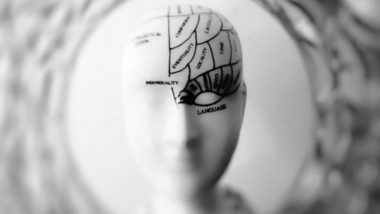Washington [US], September 23 (ANI): The ability to remember relationships between unrelated items (an odour and a location, a song and an event) is known as associative memory.
Neuroscientists at the University of California, Irvine have discovered specific types of neurons within the memory centre of the brain that are responsible for acquiring new associative memories.
Also Read | T Natarajan Tests Positive: Worried, But No Need to Press the Panic Button, Says BCCI Official.
The findings of the study were published in the journal 'Nature'.
Psychologists began studying associative memory in the 1800s, with William James describing the phenomenon in his 1890 classic The Principles of Psychology.
Also Read | On Zee Comedy Show, Juhi Chawla Recalls the Time When Shah Rukh Khan Arrived at Her Party Late at 2.30 AM.
Scientists today agree that the structures responsible for the formation of associative memory are found in the medial temporal lobe, or the famous "memory centre" of the brain, but the particular cells involved, and how those cells are controlled, have remained a mystery until now.
This study has also discovered how these associative memory neurons are controlled.
We rely on associative memories in our everyday lives and this research is an important step in understanding the detailed mechanism of how these types of memories are formed in the brain.
"Although associative memory is one of the most basic forms of memory in our everyday life, mechanisms underlying associative memory remain unclear," said lead researcher Kei Igarashi, faculty fellow of the Center for the Neurobiology of Learning and Memory and assistant professor of anatomy and neurobiology at the UCI School of Medicine.
The study reported for the first time, that specific cells in the lateral entorhinal cortex of the medial temporal lobe, called fan cells, are required for the acquisition of new associative memories and that these cells are controlled by dopamine, a brain chemical known to be involved in our experience of pleasure or reward.
In the study, researchers used electrophysiological recordings and optogenetics to record and control activity from fan cells in mice as they learn to associate specific odours with rewards.
This approach led researchers to discover that fan cells compute and represent the association of the two new unrelated items (odour and reward).
These fan cells are required for the successful acquisition of new associative memories. Without these cells, pre-learned associations can be retrieved, but the new associations cannot be acquired. Additionally acquiring new associations also requires dopamine.
"We never expected that dopamine is involved in the memory circuit. However, when the evidence accumulated, it gradually became clear that dopamine is involved," said Igarashi.
"These experiments were like a detective story for us, and we are excited about the results," added Igarashi.
This discovery is an important piece in the puzzle of understanding how memories are formed in the brain and lays a foundation on which other researchers can continue to build.
Associative memory abilities are known to decline in neurodegenerative diseases like Alzheimer's Disease.
Understanding the neurobiological mechanism of how these memories are formed is the first step to developing therapeutics to slow the loss of associative memory abilities in Alzheimer's Disease. (ANI)
(The above story is verified and authored by ANI staff, ANI is South Asia's leading multimedia news agency with over 100 bureaus in India, South Asia and across the globe. ANI brings the latest news on Politics and Current Affairs in India & around the World, Sports, Health, Fitness, Entertainment, & News. The views appearing in the above post do not reflect the opinions of LatestLY)













 Quickly
Quickly


